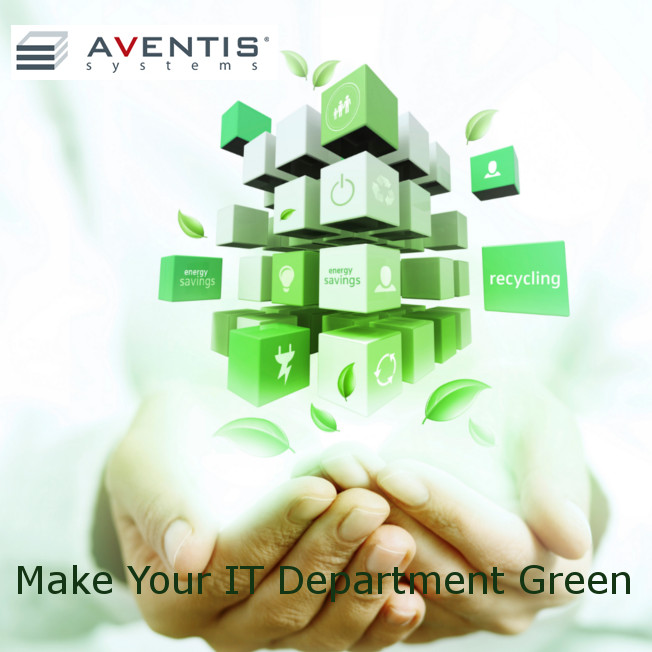How Your IT Department Can Become More Eco-Friendly
We are living in a society that is more environmentally conscious than ever before. That’s a good thing for everyone, including those of us in the IT world. In fact, there are real, concrete benefits to creating a more environmentally friendly IT department. In addition to the good feeling you get from reducing your company’s negative impact on the planet, going green also has the potential to put some serious green back into your business’ budget.
Read on for a few examples of how your IT department could become more environmentally friendly, and how doing so could benefit you.

Buy More Energy-Efficient Products
Servers, storage arrays and other IT products can use a tremendous amount of energy during everyday operations. As business’s data and computing demands continue to increase, environmentally conscious IT departments must learn to seek out products that are more efficient, allowing them to process increasing amounts of data using similar or even lower amounts of energy.
Increasing the efficiency of their products has become an important priority for many hardware manufacturers, and your IT department can now reap the benefits by purchasing the newest generation of IT hardware. One example of this trend can be found in
Dell PowerEdge Servers. According to Dell, the latest generation of PowerEdge servers is 163 times more energy efficient than the servers from the same family were just 10 years ago.
While the rapid developments in energy efficiency are particularly impressive when viewed over a long time period, the improvements during recent generations are still substantial. In fact, the 13th generation
PowerEdge R630 1U server is able to do 9.5 percent more work with 19 percent better overall energy efficiency than the PowerEdge R620, the equivalent model from the previous generation. This greater energy efficiency could help reduce the footprint of your data center, while also helping you reduce total cost of ownership by addressing one of the single largest sources of controllable costs in your IT infrastructure.
Consider Investing in Refurbished Hardware
While IT products go through significant improvements over time, it’s important to realize that there is an environmental cost to manufacturing that new hardware as well. In some cases, the most environmentally friendly product you can buy is one that doesn’t have to be manufactured at all, because it already exists.
By purchasing
refurbished IT hardware, you can remove the environmental impact of building a new system, while also providing a new home for an existing system. In addition to the environmental benefits of buying a refurbished system, you can also take advantage of cost savings that is up to 50 percent lower than the price a brand new system. In return, you’ll get a system that has been cleaned, tested and reconfigured to ensure quality, and still has many years of reliable service left to provide. This makes refurbished systems a win-win for the environment and your IT budget.
Aventis Systems Can Help Meet Your Eco-Friendly Goals
Considering environmental costs doesn’t only apply to purchasing new equipment. IT buyers and business owners should consider the environment when
disposing of hardware as well. To help with this, Aventis Systems has a buy-back program that offers Aventis Bucks to customers for their used IT equipment. Aventis Bucks are good for in-store credit that never expires.
Whether you’re looking to buy the latest hardware with the highest energy-efficiency ratings, invest in refurbished hardware or dispose of outdated equipment, Aventis Systems is here to help. We can help you understand how the IT purchasing decisions you make affect your organization’s environmental footprint, and your IT budget.
Contact us today to get started with a greener approach to IT.
To learn about the importance of electronic waste prevention, watch our short webinar, "E-Waste Prevention Tips" or browse the slides below.